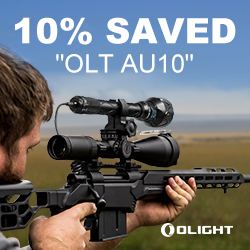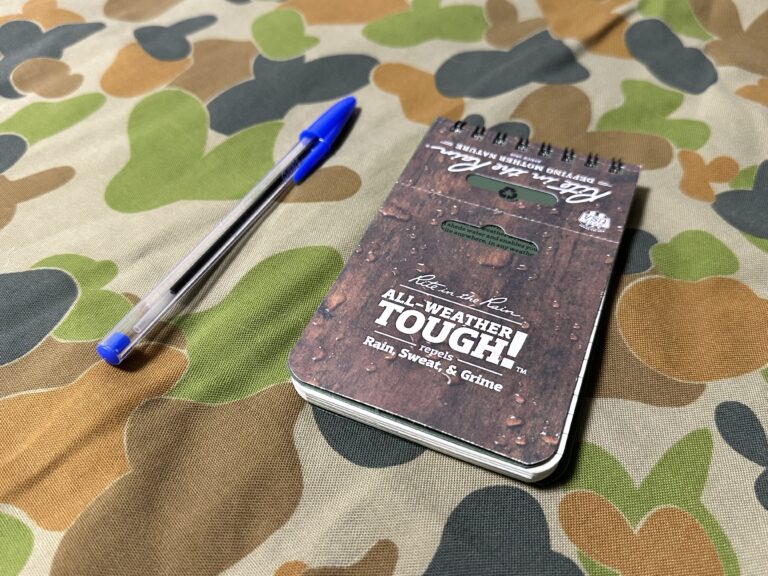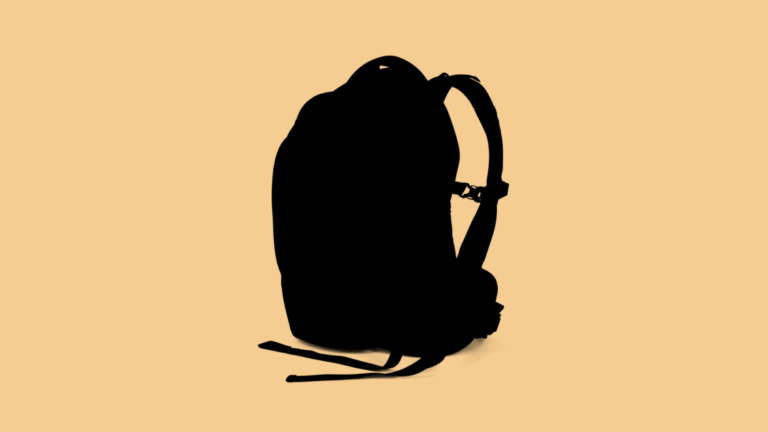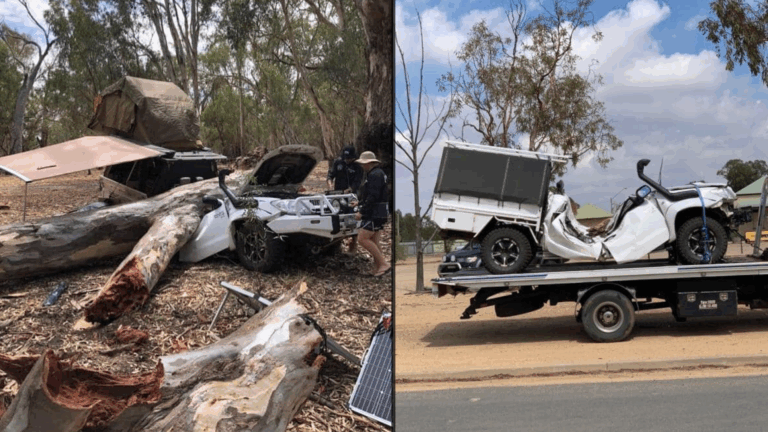Target practice in the living room?
Yep, you can plink away with any handgun if you load it with soft bullets*.
*Now for the legal disclaimer…
This article was originally written in 1968 for the ‘Popular Mechanics’ Encyclopedia (A/B). Over the next few weeks, we’re taking some time to share some of the cool (and crazy) stuff that your grandparents used to get up to – as written in these books.
Our first article is focused on pistol shooting in the home. Obviously, the information contained in this article is intended for entertainment purposes only. Please do not attempt to make the bullets described, much less use them in a suburban environment.
We take no responsibility for any injury or legal repercussions that stem from the manufacture and use of these bullets.
With that out of the way, click here to read more…
Blast away indoors with wax bullets
“Pistol shooting is a tough sport. To be good you’ve got to work at it. But how can you practice shooting when the local range is under 3 ft. of snow, or you get home from work late and don’t have enough time to drive all the way to a distant range and back?
You don’t have such problems, of course, if you shoot a .22 and local laws permit you to set up a basement range. But that solution wouldn’t do you any good if you favour such centre-fire calibres such as the .38, .44 or .45.
Hopeless? Not at all.
Today you can shoot indoors – even with the bigger calibre pistols. You can even practice in your living room if you like!
How do you protect the walls, tone down the muzzle blast and stop bullets from ricocheting all over the neighbourhood? Simple. Just use wax bullets, fired by primers only. Aside from being amenable to parlour practice, these bullets are gentle enough to be stopped by a sheet of plywood, and accurate enough to keep your shooting eye in good trim. They’re also perfectly safe if used with ordinary care.
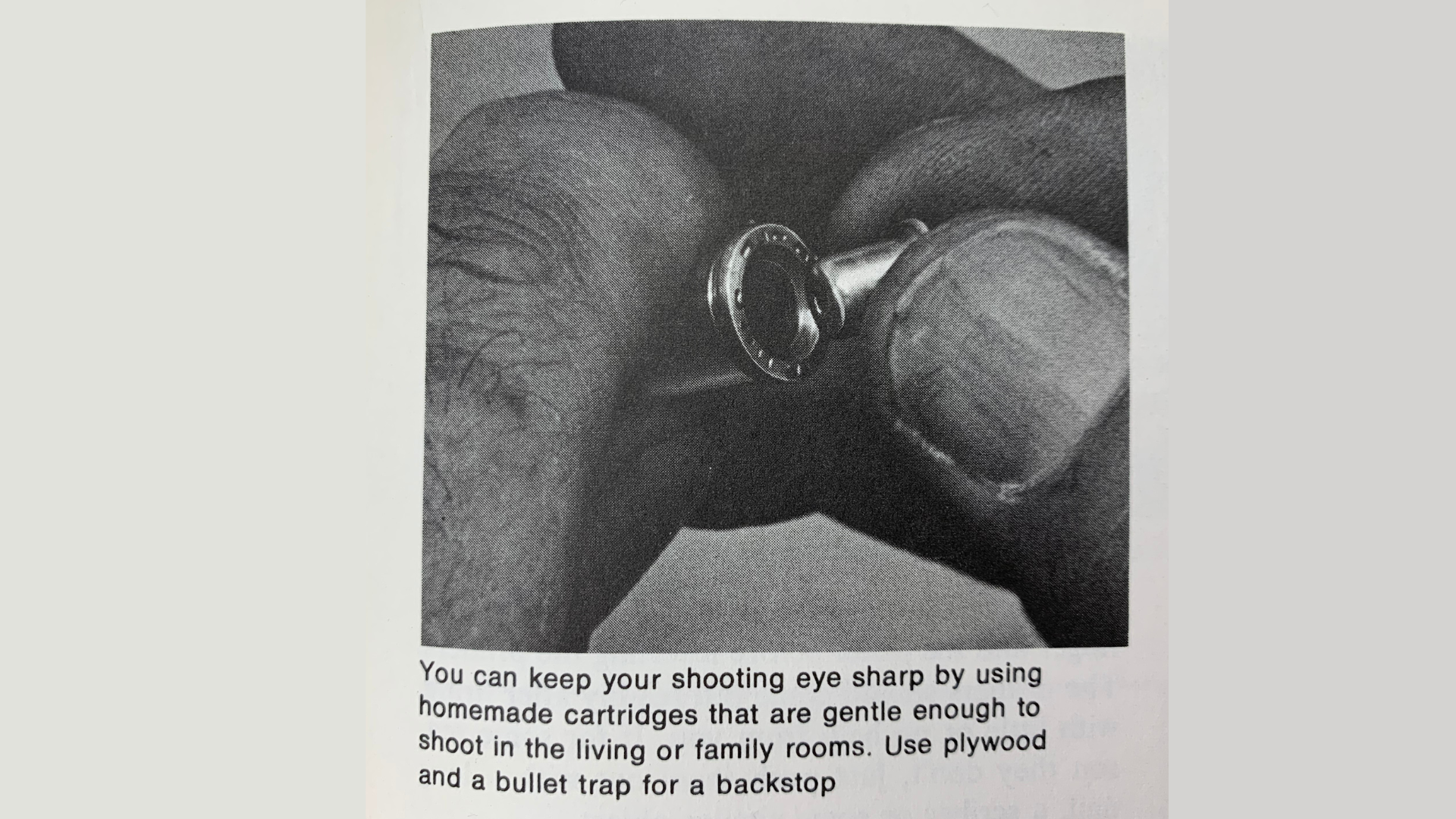
Loading wax bullets is quite simple, even if you don’t own a loading tool, All you do is drill and countersink a set of empty cartridge cases – say a minimum of six – to accommodate shotgun primers. The primers can be inserted by hand. In fact, experience has shown that the rounds work best when the shotgun primers fit loosely enough to simply fall out after they are fired. Since primers vary somewhat from one manufacturer to another, the cases should be drilled to take a particular brand of primer. The case shown below was first drilled with a 15/64-in. drill, then countersunk with a 5/16-in. drill. The countersinking really is the only critical part of the bullet-making job. If you overdo it even slightly, the primers will seat too far away from the firing pin to ensure ignition. If you don’t drill deep enough, the primer rims will protrude from the cartridge cases and bind the revolver cylinder. The wisest course is to proceed with the work slowly and, by trial and error, see to it that each primer rims sits exactly flush with the bottom of the cartridge case.
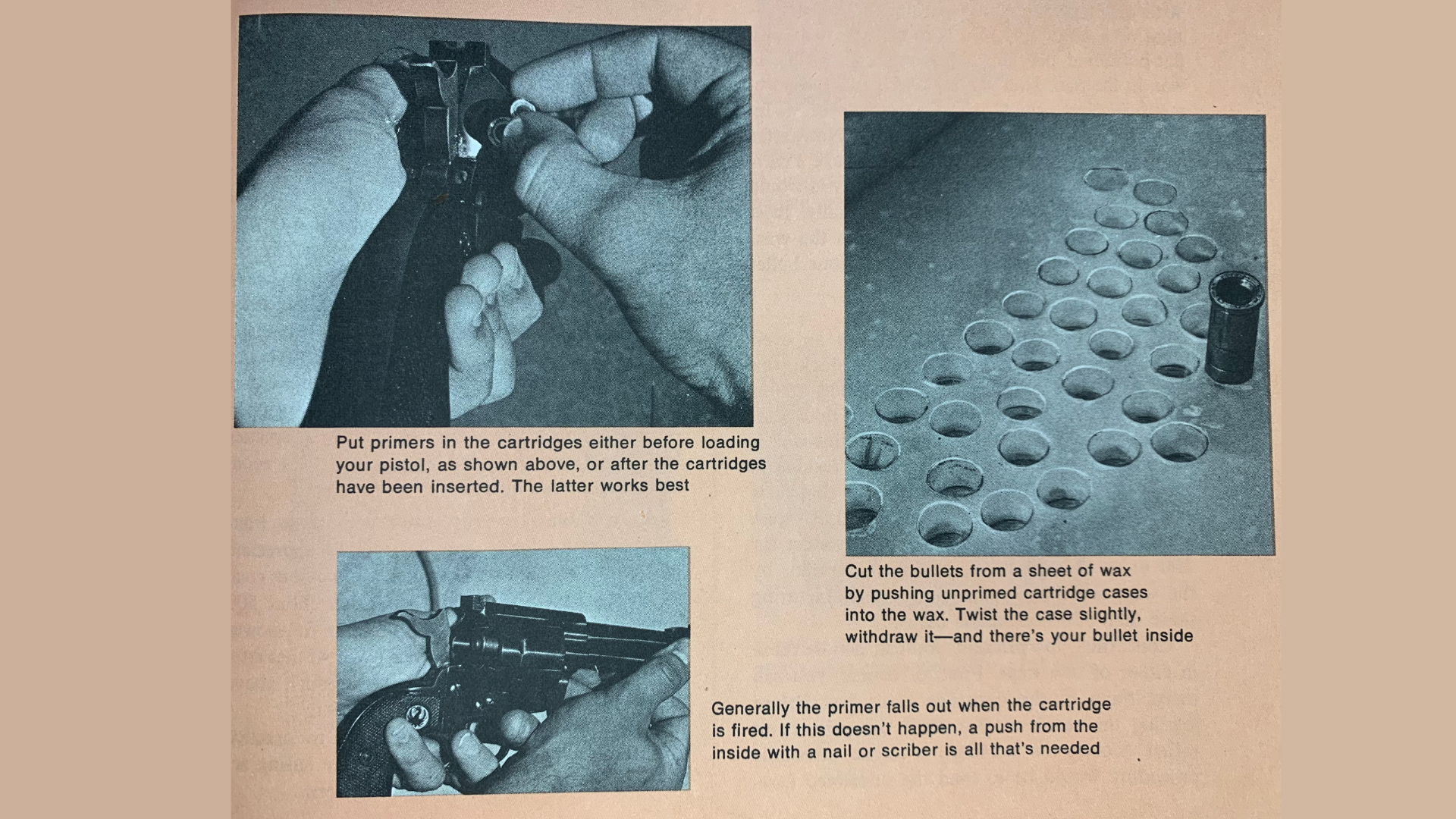
Making the bullets and loading them into the cartridge cases is accomplished simultaneously. The bullets illustrated on these pages were made from ordinary household paraffin or home canning wax. Your first step is to melt the wax in a flat-bottomed pan until there’s about 5/16 in. of wax in the pan. Don’t worry about this measurement; it’s not critical, since variations of 1/16in. or so don’t affect accuracy very much. Now, after cooling the wax to room temperature, take a cartridge case and push it into the wax as you would press a cookie cutter into dough. Finally, twist the case slightly and withdraw it from the wax. The cylinder of wax left in the case is your bullet.
an even easier way
If that’s not simple enough, here’s an even easier way” Sporting goods dealers stock wax that is specifically formulated for making bullets and comes in sheets of the desired thickness. Since you don’t have to melt it down, this wax is safer than paraffin. It also leaves less residue in the bore of the pistol., and the residue that does remain is much easier to clean out. Less than a buck will buy you enough of this product for 200 or so .38 slugs. (A pound of paraffin, by the way, should be sufficient for manufacturing more than 500 homemade bullets.)
Concerning the primers, you can handle these in either of two ways. First, of course, you can insert them into the cartridge case just before loading the revolver. But since the primers fit rather loosely in position, a more advisable procedure would be to load the un-primed cartridges into the pistol before inserting the primers. The primers should come out readily after firing, with little help or no help from you. If for any reason they don’t, just push them out with a long nail, or some similar object.
As you might expect, the accuracy of wax bullets is not as good as that of standard loads. There is more dispersion due to bullet variations and fouling of the bore. And velocity falls off quickly. This doesn’t mean that you can’t have some good shooting practice, though, because at ranges of about 20ft. – and how many living rooms are much large than that? – You can expect consistent groups of around 3 in. in diameter on the target if you hold is good.
Loads can hurt you
One word of caution is in order. Don’t be careless with these wax bullets. Although wax has little penetration, it can break glass and is capable of bruising a person badly. It might easily put out an eye. So practice the same safety rules when shooting wax loads as you do with standard loads. As for a backstop, a simple plywood bullet trap is all that is needed. Without the trap – that is, if you just shoot against a straight wooden or metal backstop – the wax bullets splatter badly and can spoil the appearance of a room or basement in a hurry.
As you blast merrily away with these tranquilised pistol loads, you’ll begin to appreciate one of their most attractive features – low cost. It should only cost around $10 for about 500 rounds, which is a good deal less than full-power loads, even when you load your own. At that rate, a winter’s pistol shooting won’t run much above 30 bucks – a reasonable price, indeed. And best of all, you’ll be able to practice right in your home. By the time spring arrives, you can be in top shooting form.”
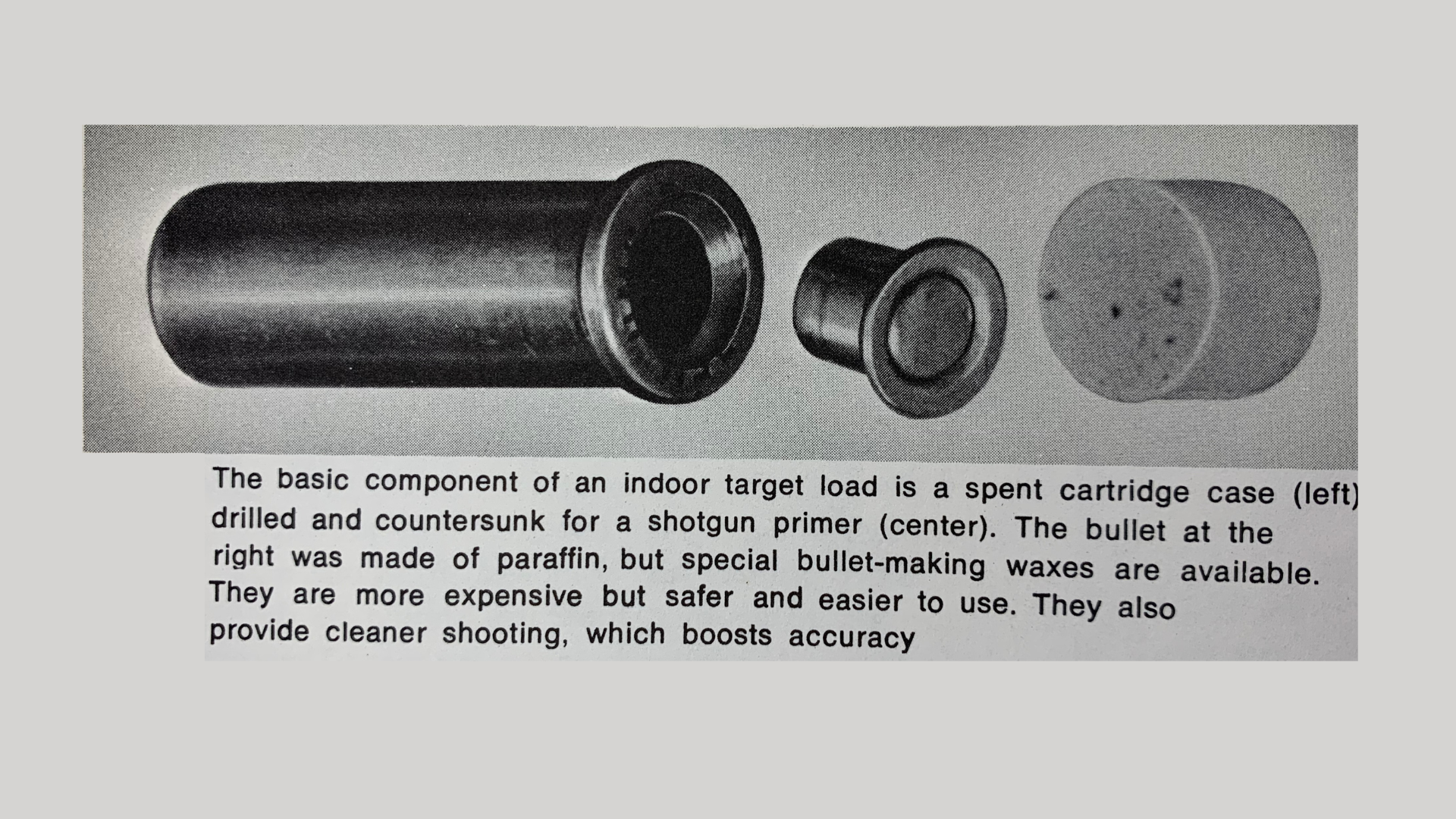
The subject content of this article belong to Popular Mechanics – All Rights Reserved.
Final thoughts
Yet again, the late 60s have not failed to impress us with their loose attitude and wacky antics. To give the writer full credit, with all of those safeguards in place – it would actually be a relatively safe activity. If anything, perhaps a tad noisy and extremely messy.
I wonder if that’s why the older generation had plastic covers on all of their lounges…

